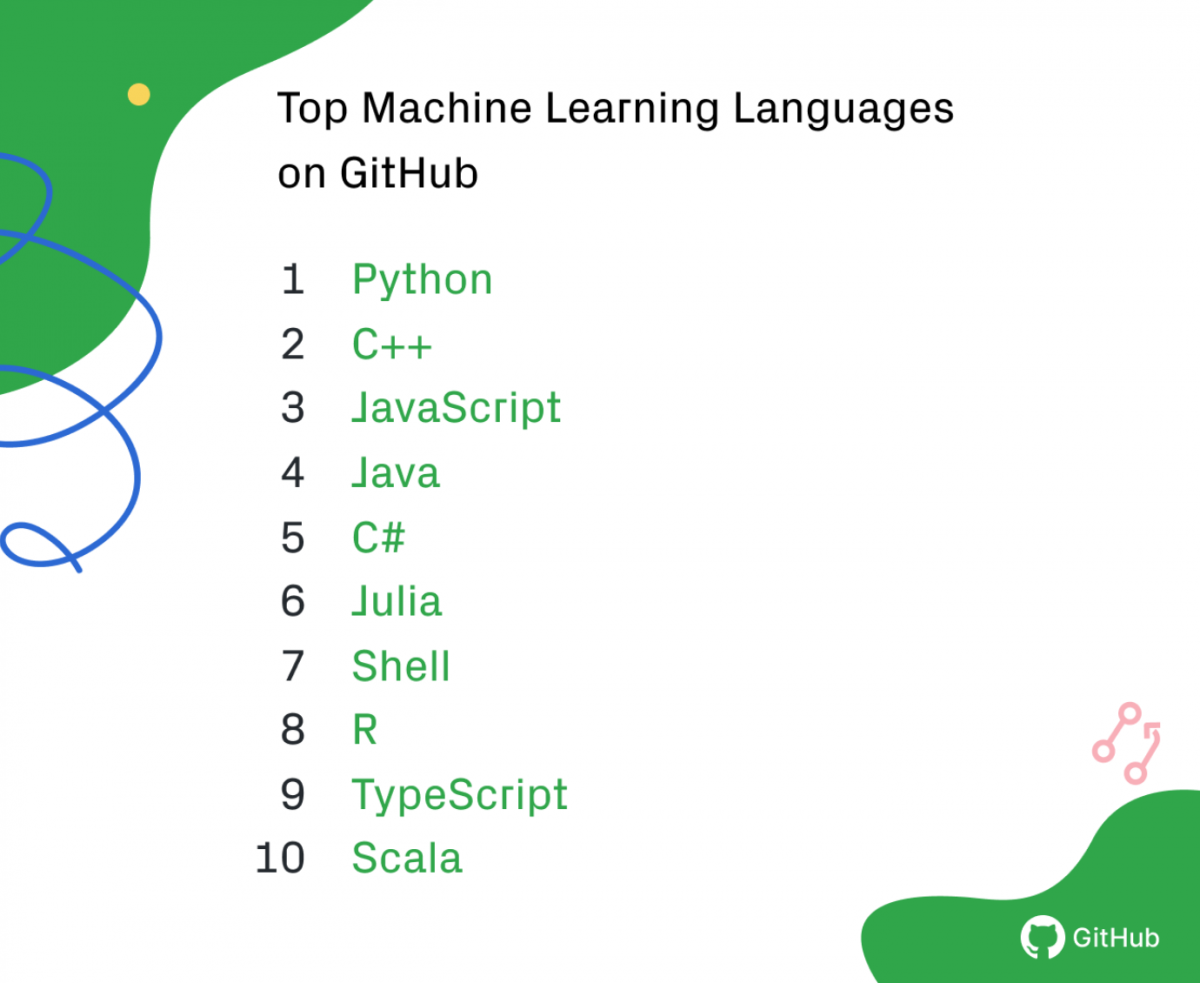According to BCC research, the machine learning market will grow to $90.1 billion by 2026, an almost 40% uptick in five years. That shows how companies are increasingly investing in ML solutions, often looking for skilled professionals to help them create custom software.
Given the data, it’s little surprise that many people want to learn more about AI and ML and, in turn, develop the necessary skills to become a machine learning engineer. If this sounds like you, we’ve compiled a list you’ll want to read.
After all — there are hundreds of online ML and AI courses out there, but only a few warrant your attention. This article runs through the highest-rated free courses, helping you start your learning journey on the best footing.
Let’s run through your options.
1. Machine Learning Introduction for Everyone
Authors: Aije Egwaikhide, Yasmine Hemmati
For the beginners among you, this machine learning course from IBM will meet your needs. What’s more, it’ll only take you seven hours to get to grips with the basics of machine learning, and then you can move on to more advanced courses.
The instructors are data scientists. And they’ve pieced together a three-module course that covers ‘Machine Learning For Everyone,’ ‘Machine Learning Topics,’ and a ‘Final Project.’
Once you’ve finished each module, you’ll know all about:
- The basics of machine learning and data science
- The way ML models work
- Supervised and unsupervised learning
- ML tools and applications
- Classification
- Regression
- Evaluating machine learning models
- Best practices in ML
These topics give you everything you need to develop a robust ML skillset.
2. Machine Learning for Data Science and Analytics
Authors: Ansaf Salleb-Aouissi, Cliff Stein, David Blei, Itsik Peer Associate, Mihalis Yannakakis, Peter Orbanz
If you ever dreamt of attending classes at Columbia University but never had the chance, this artificial intelligence course focused on ML is the next best thing. It’s dedicated to data scientists, and believe me: it’s run by some of the institution’s most experienced lecturers, including computer science and statistics professors.
It’ll help you get to grips with the fundamentals of ML and its respective algorithms, including linear regression and supervised and unsupervised learning, among others.
You’ll also learn how to:
- Search for patterns in data and use them to make decisions and predictions about real-world issues
- Uncover hidden themes in extensive collections of documents
- Handle missing data
- Create custom data analysis solutions suitable for different businesses
- Make data predictions
That’s just for starters, and don’t be afraid of the academic vibe. The instructors are very good at explaining complex topics in an easy-to-understand way.
3. Machine Learning
Author: Andrew Ng
Everyone interested in machine learning has heard of Andrew Ng: one of the most respected people in the AI world.
We wrote about him in our article on the Top AI Influencers To Follow In 2022. Here, we’ll focus more on his AI courses, particularly the one on ML (one of the most popular and highly-rated Machine Learning online courses around).
Once complete, you’ll know all about machine learning, statistics, neural networks, and data mining.
The course covers the following:
- Supervised learning
- Unsupervised learning
- Best practices in machine learning
Andrew includes several case studies to help you see how to apply your new skills in the real world, but one thing.
While the AI course is free, you have to pay for the final certificate.
4. Data Science: Machine Learning
Author: Rafael Irizarry
As you may know, machine learning is used in Data Science, and it’s one of the 5 Most In-Demand Skills for a Data Scientist.
That’s why it helps to know the fundamentals of ML and the different learning algorithms before you do any data science work. The following Data Science course run by Rafael Irizarry, Professor of Biostatistics at Harvard University, is all about that.
In this interesting course, you’ll learn:
- The basics of ML
- How to perform cross-validation to avoid overtraining
- The most popular machine learning algorithms
- How to build a recommendation system
- What is regularization, and why is it useful?
- What is data analysis?
- How to train data to obtain valuable insights
The artificial intelligence course itself is free. However, the exam and the certificate cost $99 — but it is from Harvard, so it’s worth it, right?
5. Machine Learning with Python: A Practical Introduction
Author: Saeed Aghabozorgi Ph.D.
According to GitHub, Python is the most popular programming language used in machine learning. That’s why you should consider learning how to apply it in ML projects, and this Machine Learning in Python course can help you with that.
The course’s main goal is to show you how to use Python, one of the most popular and approachable programming languages, in ML. Under Dr. Saeed Aghabozorgi, Senior Data Scientist at IBM, you’ll run through the following five modules of the free ML course:
- Introduction to Machine Learning: ML applications, supervised vs. unsupervised learning, Python libraries suitable for ML
- Regression: linear, non-linear, and model evaluation methods
- Classification: K-Nearest neighbor, decision trees, logistic regression, support vector machines, and model evaluation
- Unsupervised Learning: K-Means, hierarchical and density-based clustering
- Recommender Systems: Content-based recommender systems and collaborative filtering
Once finished, you’ll understand the difference between the two main types of machine learning methods, the various ML algorithms, and how statistical modeling relates to ML (as well as how to compare them).
Moreover, you’ll know how to transform theoretical knowledge into practical skills.
6. Machine Learning and Artificial Intelligence
Author: Google’s researchers
We know some of you are familiar with the basics, so let’s move on to more advanced Machine Learning and Artificial Intelligence courses. Google runs this one, and you can choose between two paths.
The first is for Data Scientists / Machine Learning Engineers, consisting of eight parts:
- Big Data & Machine Learning Fundamentals
- Perform Foundational Data, ML, and AI Tasks in Google Cloud
- Machine Learning on Google Cloud
- Advanced Machine Learning with TensorFlow on Google Cloud Platform
- MLOps (Machine Learning Operations) Fundamentals
- ML Pipelines on Google Cloud
- Explore Machine Learning Models with Explainable AI
- Build and Deploy Machine Learning Solutions on Vertex AI
The second is dedicated to Contact Center Engineers, offering a shorter AI course made up of just three elements:
- Customer Experiences with Contact Center AI
- Automate Interactions with Contact Center AI
- Create Conversational AI Agents with Dialogflow CX
Following each course, you’ll be able to implement the latest ML and AI solutions by exploring training on TensorFlow, Natural Language API, Cloud Vision, and more.
These skills are a must-have if you plan to work with Google Cloud.
7. Introduction to TensorFlow for Artificial Intelligence, Machine Learning, and Deep Learning
Author: Laurence Moroney
TensorFlow is an open-source framework that gives you many opportunities to create advanced machine learning models. This course is a great starting point if you want to use it to build and apply scalable models to real-world problems.
During the course, you’ll learn:
- The best practices for using TensorFlow
- How to build a primary neural network
- How to train a NN for a computer vision application
- How to use convolutions to enhance your neural network
This free TensorFlow course is best for intermediate-level students (while you’ll need some experience in Python and high school-level math, prior ML or DL knowledge is not required) — and why do we recommend it?
Well, its rating is 96% based on almost 40,000 reviews, so what’s not to like?!
8. Machine Learning: Classification
Authors: Emily Fox, Carlos Guestrin
Have you ever opened your inbox and asked, ‘Why are some emails here while the rest end up in spam?’
Well, that’s the work of ML-powered classification algorithms. These algorithms also power plenty of other applications, and during this free ML course from the University of Washington, you’ll learn about most of them using real-world case studies.
The course runs through numerous topics, including:
- Introduction to classification
- Linear Classifiers
- Logistic Regression (inc. Overfitting & Regularization)
- Decision Trees
- Handling Missing Data
- Boosting
- Precision-Recall
- Scaling to Huge Datasets
Please note: it can take up to seven months to finish the entire course, so you’ll probably have to purchase a premium account with Coursera to complete it.
9. Fundamentals of Reinforcement Learning
Authors: Matha White, Adam White
The next course is all about a subfield of ML: reinforcement learning.
This technology appears in many real-life applications, including autonomous cars, healthcare, gaming, and marketing.
The field is broad enough for everyone to find something of interest — while the artificial intelligence course from the University of Alberta consists of 4 parts, with hands-on programming assignments and quizzes helping you apply your knowledge and solve genuine business problems.
You’ll learn how to:
- Understand essential exploration techniques and the exploration/exploitation tradeoff
- Comprehend tools for making optimal decisions
- Implement dynamic programming
If you’re familiar with probability and prediction, linear algebra and calculus fundamentals, and Python 3.0 (and you know how to implement algorithms from pseudocode), try this ML course and build on your skills!
10. ChatGPT Prompt Engineering for Developers
Authors: Isa Fulford (OpenAI) and Andrew Ng (DeepLearning.AI)
And now it’s time for a course on using… ChatGPT! Yes, you heard right. “ChatGPT Prompt Engineering for Developers” is a gateway to understanding and harnessing the power of large language models (LLMs) like ChatGPT, which have significantly influenced the AI industry. Taught by Isa Fulford from OpenAI and Andrew Ng from DeepLearning.AI, it offers a comprehensive guide to prompt engineering, leveraging the OpenAI API to build innovative and impactful applications.
After completing this course, you will be equipped to:
- Understand LLMs: Gain a solid grasp of how models like ChatGPT function.
- Master Prompt Engineering: Learn the art of crafting effective prompts for diverse applications.
- Utilize OpenAI API: Implement LLM APIs for tasks ranging from text summarization to sentiment analysis.
- Create Custom Chatbots: Develop your own chatbots using the principles and techniques taught.
This course not only provides a comprehensive explanation of all key concepts and tools but also offers hands-on experience through practical exercises, including a Jupyter notebook environment. You’ll come away with a thorough understanding of prompt engineering, ready to apply these skills in your projects.
11. BERT Sentiment Analysis On Vertex AI Using TFX
Author: Tomasz Maćkowiak
Last but not least, a resource for advanced machine learning engineers: BERT Sentiment Analysis On Vertex AI Using TFX.
This AI course presents a comprehensive, step-by-step description of applying TFX to sentiment analysis, a classic and easy-to-understand Machine Learning problem. It was created by our very own Tomasz Maćkowiak, Data Scientist at DLabs.AI.
Once you finish it, you’ll know how to:
- Create a sentiment analysis ML model using ready-made components (BERT)
- Create an end-to-end MLOps pipeline for training, evaluating, and deploying the model using TFX (Tensorflow Extended)
- Deploy the pipeline to Google Cloud Platform’s serverless Vertex AI Pipelines environment
- Preview all the important pipeline artifacts
This sentiment analysis course offers an easy-to-understand explanation of all the key concepts and tools used to create a sentiment analysis model, the entire pipeline, and helper library codebase, ready for use as a template in your project.
So, please — do let us know if you use it!
We hope you find this list helpful. If you know of another valuable (and free!) Machine Learning or Artificial Intelligence Courses that we’ve missed, let us know as we’d love to add it to our list.
And if you’re looking for more ML free resources, here are some great free eBooks on Artificial Intelligence.






